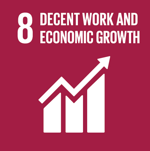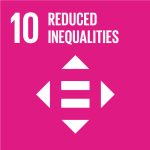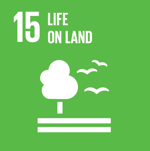Network of resilient farms with sustainable forest management
 Argentina
Argentina
 Bolivia
Bolivia
 Paraguay
Paraguay
 Uruguay
Uruguay
Executive Summary
The Gran Chaco Americano is the largest dry tropical forest region in the world, spanning across Argentina, Paraguay, and Bolivia primarily. Currently, it is a global hotspot for deforestation and land-use change for agriculture and livestock farming. This process is responsible for the loss of biodiversity and ecosystem services, endangering the resilience of agricultural systems to the effects of climate change. Livestock production in the forests has been in the form of traditional silvopastoral systems, unsustainable due to their association with intense and severe interventions in the natural ecosystem.
The aim of this project is to increase the sustainability and resilience of small-scale livestock producers and women's groups engaged in multiple uses of the forest, who are facing the effects climate change, through the implementation of adaptive management strategies.
The technological solution
Specific objectives are:
1) Establish a network of forest management experiences with integrated livestock and multiple uses of the Chaco forest based on previous experimental sites implemented by project partners;
2) Monitor and adjust the experiences that make up the adaptive management network;
3) Build capacities of local actors for the implementation of management strategies;
4) Disseminate information and knowledge about the results of adaptive management in the sustainability and resilience of small-scale producer systems.
Results
The expected impact operates in three dimensions:
Environmental (provision of ecosystem services, increased ecosystem resilience, biodiversity conservation);
Economic-productive (increased forage productivity, reduced water and nutrient cycle disruption, increased reproductive indices, production of higher-quality forage); and
Social (promotion of community roots, improvement of well-being, and appreciation of meat and non-timber products as environmentally friendly, contributing to local development).
Beneficiaries
The project's actions include 2,100 direct beneficiaries, composed of 1,130 small-scale livestock producers from the provinces of Córdoba, Santiago del Estero, Salta (Argentina), Villa Montes (Bolivia), and Presidente Hayes Department (Paraguay); 920 men, youth, and indigenous women from Salta and Presidente Hayes, and 30 professional technicians.
The indirect beneficiaries are around 7,000 small-scale livestock producers, 35,000 members of indigenous communities, and 150 private technical advisors from public institutions. Regional scaling would cover 46,000 small-scale livestock producers in the Gran Chaco Americano and approximately 100,000 members of indigenous communities in rural areas of the region.
Sustainable Development Goals







Participating Organizations
Executor
- Instituto Nacional de Tecnología Agropecuaria (INTA) - Argentina
Co-executor
- Naturaleza, Tierra y Vida (NATIVA) - Bolivia
- Instituto Paraguayo de Tecnología Agraria (IPTA) - Paraguay
Associated
- Consorcio Champaquí en Defensa del Monte Nativo (Consorcio Champaquí ) - Argentina
- Grupo “Familias productoras del monte traslasierra” (Grupo Familias productoras del Monte Traslasierra) - Argentina
- LOS ZANGANOS (ZANGANOS) - Argentina
- ALMAMONTE (ALMAMONTE) - Argentina
- Grupo de mujeres Las Guapas (Las Guapas) - Argentina
- Grupo de mujeres recolectoras (Grupo El Milagro) - Argentina
- Federación Ganaderos del Gran Chaco (FEGACHACO) - Bolivia
- GOBIERNO REGIONAL VILLAMONTES (VILLAMONTES) - Bolivia
- Programa Cooperativo para el Desarrollo Tecnológico Agroalimentario y Agroindustrial del Cono Sur (PROCISUR) - Uruguay





